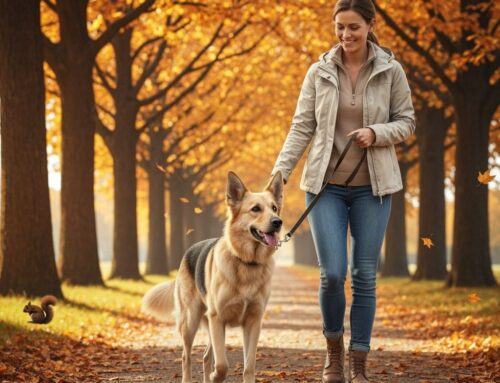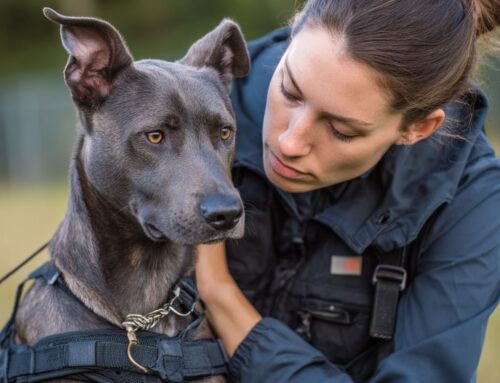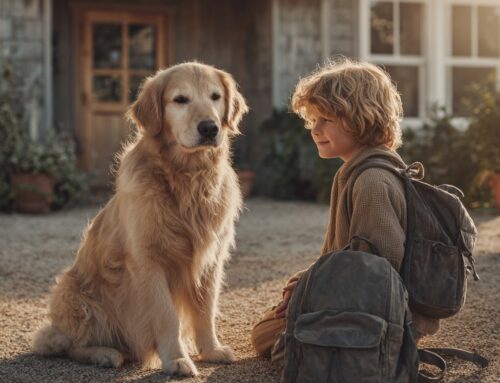Between the ages of eight and 20 weeks old is the ideal window of opportunity to set patterns of behavior in your puppy’s head involving socialization. Socializing a dog correctly is important because patterns of behavior learned in their youth can stay with them for a lifetime and can greatly influence their outlook and disposition.
What Is Socialization?
When we talk about socialization, we’re not referring to your dog meeting and interacting with other animals and people, but simply the process of going out into the outside world. The goal is that your dog should by default focus their attention on you, rather than other people or animals (including other dogs).
If your dog learns that other people or animals are the sources of attention, treats or threats, this expectation can become ingrained and can be very difficult or impossible to “unlearn.” Therefore, it’s critical that, as a dog owner, you intervene before another person or animal tries to capture your dog’s attention or even tries to hurt or intimidate them.
Why Meeting “Everyone” May Be a Bad Idea
“One of the biggest mistakes new dog owners make is allowing any passing person or another dog to say ‘hello,’ pet or otherwise interact with their puppy,” says David Greene, the founder and training director of San Diego County, California-based Performance K9 Training.
Just because a stranger, a friend or even a friend’s dog wants to interact with your puppy doesn’t mean that’s a good idea; in fact — as we shall see — this is may be a poor idea if the timing is wrong. In some cases, you may have to physically get in the way or otherwise take action if a stranger or another dog gets too close to your dog.
Signs of Anxiety, Worry and Stress
Forcing a puppy to meet all humans and other dogs can lead to shyness, which, in turn, can lead to anxiety. Anxiety can be seen in a puppy’s stance and other visual cues they exhibit.
A puppy that lowers its body close to the ground, dilates the pupils of its eyes and raises its hackles (the hair on its neck and back) is likely feeling fear. A pup that raises one of its paws, licks at the air, makes only brief or indirect eye contact or leaves sweaty footprints in its path might be feeling worried. Stress is often shown via a pup’s rapid panting, sweating through the paw pads of their feet and/or lowering of their tail.
Bringing or forcing your dog closer to a source of anxiety, worry or stress is a highly negative stimulus, even if the person or animal in question ultimately turns out to be friendly or harmless. And if things go in the opposite direction and your dog is hurt or injured as a result of this proximity, this can have extremely negative lasting repercussions for future interactions with people or other dogs. Even just holding your dog still and saying “It’s OK!” can be a negative stimulus, as some dogs will misinterpret this to mean “It’s OK to be scared.”
Fear Aggression
Another possible reaction a dog can have to anxiety, worry or stress is fear aggression. Fear aggression is a lashing out — through barking, growling, lunging or even biting — in an attempt to drive a negative stimulus away. Your dog may exhibit fear aggression only in the presence of certain animals or people (screaming kids, for instance), but not others. Your dog’s genetics, personality and previous negative experiences can all result in fear aggression.
Imagine if you, as a child, were forced by your parents to meet any stranger or animal that came up to you or wanted to give you something — imagine how traumatizing and/or dangerous that could be. It certainly wouldn’t increase your trust in or affection toward your parents. It’s no different if you do this with your dog.
Instead, Focus Your Dog’s Attention on You
By contrast, dog owners who keep their pup’s attention on them rather than external stimuli will gain their pup’s trust and affection; via this behavior, the pup will learn to ignore or act neutrally toward strangers and other animals; this can help not just in terms of cultivating confidence, but can actually allow your dog gain respect from other inhabitants of the wider world.
So, at this point, a question may arise: how do you keep a dog’s attention on you, rather than other people and other dogs?
There are several ways — one is to keep treats on you and reward this behavior. Another way is to redirect your pup’s attention back to you if they keep getting distracted by other people or dogs; reinforce this redirection with treats. Make it clear to your pup that you’re the one feeding them and taking care of them — not anyone else.
All of these actions will not only deepen the relationship you have with your dog; they’ll increase the loyalty your dog has to you. Show your loyalty to your dog, and that loyalty will be returned many times over.
Move your Dog Away from Negative Stimuli
If it’s obvious that an external person or animal is causing a reaction in your puppy, try bringing your dog further and further away from this stimulus, until the pup’s reaction is one of nonchalance. Treats and toys can help them re-focus their attention on you and away from the other stimulus.
This attention-focusing is not only helpful in terms of behavior, but it will also help when it comes to obedience training. Obedience training demands that a dog ignore other stimuli in favor of listening to you, their leader.
Teaching puppies proper socialization methods results in a happier, healthier outlook for your dog, and a more rewarding relationship for both of you.








